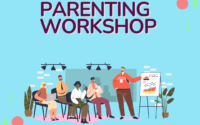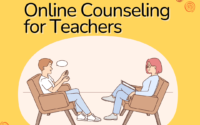Teaching extends far beyond textbooks and lesson plans
Why Classroom Counseling Techniques Matter
In the modern classroom, students face numerous stressors, including academic pressure, social challenges, and personal struggles. For teachers, being equipped with counseling skills can make a significant difference in identifying and addressing these issues early.
Classroom counseling techniques empower teachers to:
- Foster a supportive and inclusive environment.
- Address students’ emotional needs effectively.
- Manage classroom conflicts constructively.
- Promote mental health awareness and resilience among students.
By integrating counseling into their teaching practices, educators can create a positive and nurturing environment that supports holistic development.
The Role of Teachers in Student Well-Being
Teachers are often the first point of contact when students face challenges. They have a unique vantage point to observe changes in behavior, performance, and interactions. With the right classroom counseling techniques, teachers can:
- Identify Early Warning Signs
Recognize symptoms of stress, anxiety, or other emotional challenges before they escalate. - Encourage Open Communication
Build trust and create safe spaces where students feel comfortable sharing their thoughts and concerns. - Provide Immediate Support
Offer guidance and reassurance in moments of crisis, preventing further distress. - Refer to Specialists When Needed
Understand when and how to involve school counselors or external mental health professionals.
Key Classroom Counseling Techniques Every Teacher Should Master
1. Active Listening
Teachers can build trust by truly hearing what their students have to say. Active listening involves:
- Maintaining eye contact.
- Acknowledging emotions.
- Avoiding interruptions.
2. Empathy and Validation
Validating a student’s feelings is crucial in creating a supportive atmosphere. Phrases like “I understand this must be hard for you” help students feel seen and heard.
3. Conflict Resolution
Equipping students with tools to resolve disagreements promotes a harmonious classroom. Teachers can mediate disputes by:
- Encouraging respectful dialogue.
- Guiding students to find common ground.
4. Positive Reinforcement
Acknowledging positive behaviors reinforces self-esteem and motivates students to continue making constructive choices.
5. Mindfulness and Stress Management Techniques
Incorporating mindfulness exercises or relaxation techniques can help students manage stress and improve focus.
Benefits of Classroom Counseling Techniques for Teachers
Enhanced Classroom Environment
Classrooms that prioritize emotional well-being are more inclusive, respectful, and conducive to learning.
Improved Teacher-Student Relationships
Teachers who use counseling techniques build stronger connections with their students, fostering mutual trust and respect.
Reduced Behavioral Issues
Addressing emotional and social challenges proactively minimizes disruptions and fosters a positive classroom culture.
Professional Growth
Mastering counseling techniques enhances a teacher’s professional repertoire, making them more effective and adaptable educators.
How to Develop Classroom Counseling Skills
Enroll in Professional Training
Programs like ICTT’s teacher training courses offer in-depth guidance on classroom counseling techniques, ensuring teachers are well-equipped to address diverse student needs.
Practice Self-Awareness
Understanding your own emotions and reactions helps you empathize better with students.
Collaborate with School Counselors
Working closely with professional counselors provides additional insights and strategies for handling complex situations.
Final Thoughts
In today’s dynamic educational landscape, the role of a teacher goes beyond imparting knowledge. By mastering classroom counseling techniques, educators can become pillars of support, fostering a nurturing environment where students thrive both academically and emotionally.
Teachers who invest in these skills not only transform their classrooms but also leave a lasting impact on their students’ lives. Equip yourself with the tools to make a difference—because every student deserves a teacher who listens, understands, and cares.


